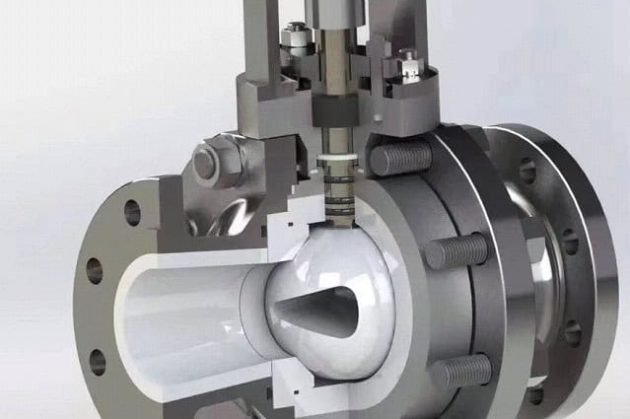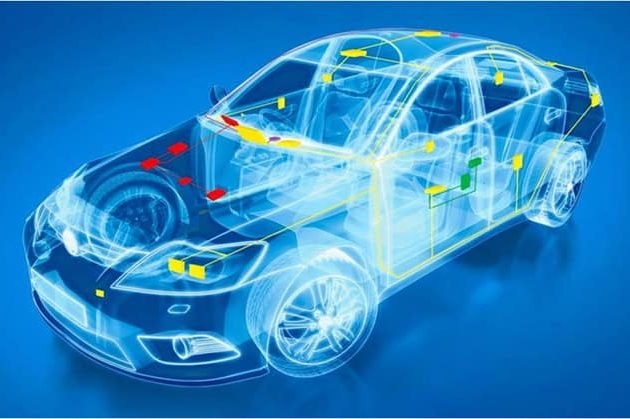Ceramic materials have emerged as vital components in various industrial applications, significantly contributing to equipment maintenance cost reduction. Renowned for their unique properties—such as high hardness, wear resistance, thermal stability, and chemical inertness—ceramics offer advantages over traditional materials like metals and polymers in demanding environments. These characteristics make ceramics particularly suitable for industries such as aerospace, automotive, chemical processing, and manufacturing, where equipment durability and longevity are paramount. The notable ability of ceramics to withstand extreme conditions while exhibiting minimal wear and corrosion resistance is a key factor in reducing maintenance costs.
Table of Contents
Their application in machinery and components not only extends operational lifespans but also minimizes the frequency of repairs and replacements, thus leading to substantial savings in labor and materials. Furthermore, the integration of ceramics can enhance operational efficiency by maintaining performance under high temperatures and pressures, resulting in fewer disruptions due to equipment failures. However, the adoption of ceramic materials is not without challenges. Economic barriers related to the initial investment costs, along with technical limitations such as fragility and production waste, pose significant hurdles for manufacturers. Additionally, supply chain complexities and regulatory challenges may complicate the scaling of ceramic technologies, potentially hindering broader implementation across industries. Despite these obstacles, the future of ceramics in industrial applications appears promising, with ongoing innovations in material science and manufacturing processes expected to enhance their functionality and reduce costs further. As industries increasingly focus on sustainability and efficiency, the role of ceramics is likely to expand, offering both economic and environmental benefits.

Properties of Ceramic Materials
Ceramic materials possess a unique set of properties that make them advantageous in various industrial applications. These properties stem from their atomic and molecular composition, which influences their performance and suitability for specific tasks.
Mechanical Properties
The mechanical properties of ceramics are notable for their high hardness and compressive strength, making them ideal for applications requiring resistance to deformation. Ceramics are generally harder and more brittle than metals, exhibiting exceptional wear resistance and the ability to maintain their structural integrity under compressive loads. However, they typically have poor impact strength, which limits their use in applications where sudden shocks are encountered. The hardness of ceramics is significantly higher than that of metals and polymers, translating into excellent abrasion resistance, especially for cutting tools and industrial coatings.
Fracture Resistance
While ceramics are known for their brittleness, certain types exhibit improved fracture resistance due to their ability to deform slightly before breaking. This property is beneficial in applications subject to shock loads, such as cutting tools and protective equipment.
Thermal and Chemical Stability
Ceramics are recognized for their exceptional thermal stability, enabling them to withstand high temperatures without significant changes in structure or properties. Materials such as alumina and zirconia maintain stability in extreme heat, making them suitable for use in industrial kilns and engine components. Additionally, their chemical stability and resistance to corrosion allow them to perform reliably in harsh chemical environments, reducing maintenance costs associated with material degradation.
Electrical Properties
Ceramic materials also exhibit unique electrical properties, functioning as good insulators in various applications. Their non-conductive nature makes them suitable for use in electrical components, where minimizing electrical conductivity is critical.
Mechanisms of Maintenance Cost Reduction
The integration of ceramic materials into industrial applications has emerged as a crucial strategy for reducing maintenance costs. Their unique properties contribute to enhanced durability, reduced wear, and improved resistance to environmental factors, ultimately leading to significant cost savings in maintenance operations.
Wear Resistance
One of the primary mechanisms by which ceramic materials reduce maintenance costs is their superior wear resistance. Ceramics exhibit exceptional hardness and low friction properties, which help minimize wear in mechanical systems. This resistance to wear can drastically decrease the frequency of repairs and replacements, lowering labor and materials costs associated with maintenance.
Types of Wear
Understanding the types of wear—such as abrasive wear, corrosive wear, and fatigue wear—is essential in appreciating the role of ceramics in maintenance cost reduction. For instance, wear-resistant ceramics can mitigate the effects of abrasive wear caused by particle interaction, which is common in many industrial processes. Additionally, ceramics are less susceptible to corrosive wear, enhancing the longevity of equipment operating in harsh chemical environments and reducing the likelihood of catastrophic failures that require extensive repairs.
Corrosion Resistance
Ceramic materials possess inherent corrosion resistance, allowing them to withstand chemical and electrochemical reactions that typically degrade metal components over time. This property is vital in industries where components are frequently exposed to corrosive substances, as it reduces the risk of structural failures and the associated costs of emergency repairs and downtime. By implementing ceramics in critical applications, companies can extend the operational life of their equipment and minimize unplanned maintenance activities.
Improved Operational Efficiency
The use of high-quality ceramic components can also enhance operational efficiency, which indirectly contributes to maintenance cost reductions. For example, ceramic materials can maintain performance under high temperatures and pressures, resulting in fewer interruptions due to equipment failures. By investing in modern machinery that utilizes ceramics, companies can achieve longer intervals between maintenance schedules and decrease overall operational costs.
Training and Awareness
Incorporating ceramic materials into maintenance strategies requires a knowledgeable workforce. Training staff in the properties and handling of ceramic components can lead to more effective maintenance practices, further enhancing cost reduction efforts. Educated personnel can identify potential issues early on, which prevents minor problems from escalating into major repairs.
Strategic Implementation
The strategic implementation of ceramics involves analyzing existing maintenance practices and integrating ceramic solutions where they can provide the most benefit. This may include replacing traditional materials in high-wear applications with ceramics or modifying maintenance schedules to accommodate the longer lifespans of ceramic components. This proactive approach helps organizations allocate resources more efficiently, ultimately reducing maintenance costs and improving overall productivity.
Applications of Ceramic Materials in Equipment
Ceramic materials are extensively utilized across various industries due to their unique properties, which include high resistance to wear, corrosion, and high temperatures. This section outlines the key applications of ceramics in industrial equipment, emphasizing their role in reducing maintenance costs and enhancing equipment longevity.
Industrial Equipment
Ceramic liners are commonly employed in industrial machinery to extend the lifespan of equipment and minimize maintenance requirements. Their superior resistance to abrasion, impact, and chemical corrosion makes them ideal for mineral processing applications, including mining, iron and steel production, smelting, and cement manufacturing. In many cases, ceramic tiles are embedded into rubber bases, further enhancing their strength and durability for specific operational needs.
Chemical Processing and Petrochemical Industries
In the chemical processing sector, ceramics play a crucial role in manufacturing vessels, pipes, and linings that handle corrosive chemicals and operate under high temperatures. Their chemical inertness and stability make them suitable for catalyst supports and membranes used in chemical reactions and separation processes. Additionally, the petrochemical industry relies on ceramic matrix composites for the fabrication of pipes and pumps designed for abrasive fluids, ensuring operational efficiency and reduced downtime.
Aerospace and Automotive Applications
Ceramics are integral in aerospace and automotive industries due to their ability to withstand extreme conditions. In aerospace, lightweight ceramic components are used in engine parts, missile nose cones, and heat shields, providing strength while contributing to fuel efficiency. Similarly, in the automotive sector, ceramics are utilized in high-performance braking systems and wear-resistant engine components, improving overall vehicle performance and longevity.
Consumer Goods and Daily Use Items
Beyond industrial applications, ceramics also find utility in consumer goods, such as cookware and kitchenware. Their temperature resilience and ease of cleaning enhance the appeal of these products. Advanced ceramics, like alumina and zirconia, are used in high-performance blades and cutting tools due to their superior durability and performance.
Innovations in Green Manufacturing
With a growing focus on sustainable practices, advancements in green manufacturing techniques aim to minimize the environmental impact of ceramic production. Innovations include developing more energy-efficient kiln technologies and utilizing sustainable raw materials. These efforts not only support environmental objectives but also contribute to the longevity and efficiency of ceramic components in industrial applications.


Benefits of Using Ceramic Materials
Ceramic materials offer a multitude of advantages that make them highly beneficial in reducing equipment maintenance costs across various industries. These benefits stem from their unique physical and chemical properties, which contribute to improved performance, longevity, and efficiency in demanding applications.
High Temperature and Wear Resistance
One of the primary advantages of ceramics is their exceptional ability to withstand high temperatures without compromising structural integrity or performance. This characteristic makes ceramics suitable for use in environments such as jet engines and industrial processes where extreme conditions are prevalent. Furthermore, ceramics exhibit high abrasion resistance, which helps to combat wear in components that experience relative motion, such as in manufacturing machinery. By minimizing wear, ceramic materials can prolong the lifespan of equipment and reduce the frequency of replacements, leading to significant cost savings.
Corrosion and Chemical Resistance
Ceramic materials are inherently resistant to a wide range of harsh chemicals, making them ideal for use in chemical processing equipment and environmental technologies. Their durability allows them to function effectively in pumps, valves, and piping within chemical plants, thereby reducing maintenance needs and downtime due to corrosion. This resistance also translates to lower operational costs, as machinery requires less frequent servicing or replacement when made with ceramics.
Energy Efficiency and Sustainability
In construction and building applications, ceramics contribute to energy efficiency by serving as excellent thermal and acoustic insulators. This property helps to reduce energy consumption for heating and cooling, thus minimizing operational costs over time. Moreover, ceramics can often be recycled after their useful life, promoting sustainability and further reducing waste generation.
Maintenance Cost Reduction
Utilizing high-quality ceramic materials can directly impact maintenance costs by minimizing the frequency and extent of repairs needed for machinery. Equipment made from ceramics is less prone to failures associated with wear, corrosion, and thermal stress. Consequently, companies can save significantly on maintenance expenditures by investing in ceramic components that provide enhanced durability and require less frequent servicing.
Case Studies and Quantitative Results
Impact of Ceramic Materials on Maintenance Costs
The application of ceramic materials across various industries has demonstrated significant reductions in equipment maintenance costs. For instance, in the aerospace sector, technical ceramics like silicon nitride have been used in propulsion systems and aerospace engine components due to their exceptional thermal properties. These materials not only withstand high temperatures but also reduce wear and tear, leading to extended equipment lifespans and lower maintenance requirements.
Examples from Industry
Aerospace Applications
Ceramic materials such as Cerbec® balls and bearings are integral to aircraft engines, offering superior performance under extreme conditions. The use of these ceramics has been shown to minimize maintenance intervals and associated costs by up to 50%, primarily due to their durability and thermal stability. Furthermore, the lightweight nature of these components contributes to overall fuel efficiency, indirectly reducing maintenance costs linked to engine performance.
Automotive Sector
In the automotive industry, the implementation of green machining ceramics has led to the production of lighter components without compromising strength. This reduction in weight is crucial for fuel economy, which translates to fewer maintenance needs associated with engine strain and wear. The integration of high-performance technical ceramics in fuel injection systems has also improved operational efficiency, resulting in decreased frequency of part replacements and maintenance activities.

Quantitative Analysis
Numerous studies have highlighted the economic advantages of incorporating ceramics into manufacturing processes. For example, companies that adopted Total Productive Maintenance (TPM) alongside the use of advanced ceramics reported labor cost reductions of up to 50% and a 20% decrease in lost production time. These findings emphasize the potential for ceramics to not only enhance product quality but also contribute to substantial cost savings in maintenance.
Long-Term Cost Benefits
The transition to high-quality ceramic components also offers long-term financial benefits. Research indicates that while initial investment costs may be higher, the lifecycle cost savings, derived from reduced maintenance, fewer breakdowns, and improved safety standards, far outweigh the upfront expenses. This approach allows companies to reallocate savings into further innovations and improvements, ultimately fostering a culture of continuous enhancement in manufacturing practices.
Long-Term ROI: Calculate Your Savings
While ceramics may cost 2–3x more upfront, their longevity delivers superior ROI:
| Metric | Metal Components | Ceramic Components |
| Replacement Frequency | Every 6–12 months | Every 3–5 years |
| Annual Downtime Cost | $12,000 | $2,500 |
| Labor Hours/Year | 60 | 10 |
Total Annual Savings with Ceramics: $22,000+ per machine.
Summary
Equipment maintenance is a major expense in industries like manufacturing, mining, and energy, where unexpected downtime and part replacements drain budgets. Traditional metals and polymers often fail under harsh conditions, but advanced ceramic materials are transforming the game. By leveraging ceramics’ unique properties—exceptional wear resistance, corrosion immunity, and thermal stability—businesses can reduce maintenance costs by 30–60% while boosting operational efficiency.
Ready to Transform Your Engineering Solutions?
No industrial challenge is too complex for Eshino. From precision ceramic rods and advanced bushings to customized nozzles and other high-performance components, we engineer solutions that combine exceptional durability, thermal resistance, and precision to meet your specific needs. Whatever your industry demands, Eshino delivers tailored expertise you can trust.

